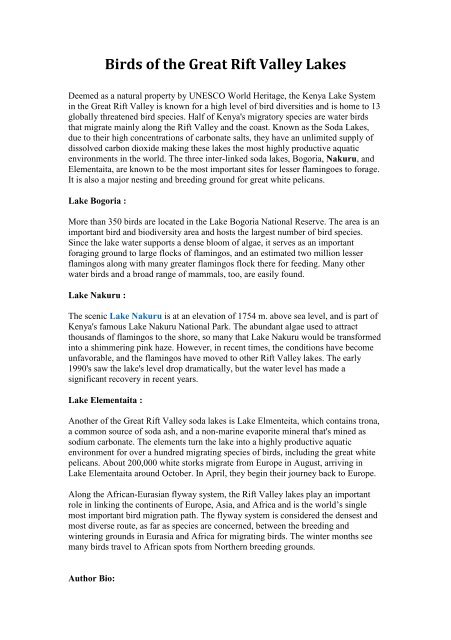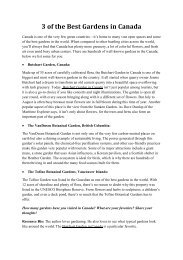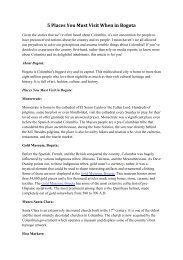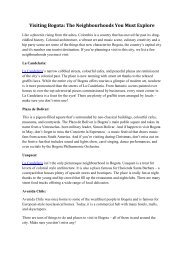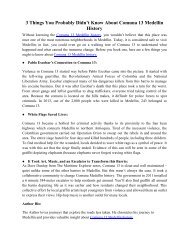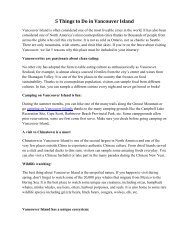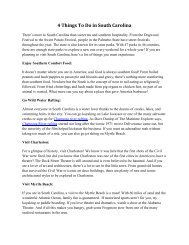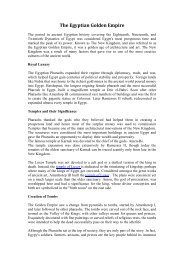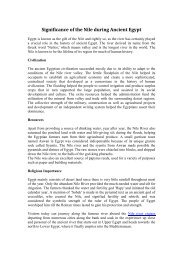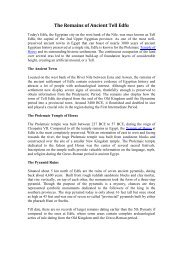Birds of the Great Rift Valley Lakes
Deemed as a natural property by UNESCO World Heritage, the Kenya Lake System in the Great Rift Valley is known for a high level of bird diversities and is home to 13 globally threatened bird species. Visit http://themaritimeexplorer.ca/2017/04/15/lake-nakuru/
Deemed as a natural property by UNESCO World Heritage, the Kenya Lake System in the Great Rift Valley is known for a high level of bird diversities and is home to 13 globally threatened bird species. Visit http://themaritimeexplorer.ca/2017/04/15/lake-nakuru/
Create successful ePaper yourself
Turn your PDF publications into a flip-book with our unique Google optimized e-Paper software.
<strong>Birds</strong> <strong>of</strong> <strong>the</strong> <strong>Great</strong> <strong>Rift</strong> <strong>Valley</strong> <strong>Lakes</strong><br />
Deemed as a natural property by UNESCO World Heritage, <strong>the</strong> Kenya Lake System<br />
in <strong>the</strong> <strong>Great</strong> <strong>Rift</strong> <strong>Valley</strong> is known for a high level <strong>of</strong> bird diversities and is home to 13<br />
globally threatened bird species. Half <strong>of</strong> Kenya's migratory species are water birds<br />
that migrate mainly along <strong>the</strong> <strong>Rift</strong> <strong>Valley</strong> and <strong>the</strong> coast. Known as <strong>the</strong> Soda <strong>Lakes</strong>,<br />
due to <strong>the</strong>ir high concentrations <strong>of</strong> carbonate salts, <strong>the</strong>y have an unlimited supply <strong>of</strong><br />
dissolved carbon dioxide making <strong>the</strong>se lakes <strong>the</strong> most highly productive aquatic<br />
environments in <strong>the</strong> world. The three inter-linked soda lakes, Bogoria, Nakuru, and<br />
Elementaita, are known to be <strong>the</strong> most important sites for lesser flamingoes to forage.<br />
It is also a major nesting and breeding ground for great white pelicans.<br />
Lake Bogoria :<br />
More than 350 birds are located in <strong>the</strong> Lake Bogoria National Reserve. The area is an<br />
important bird and biodiversity area and hosts <strong>the</strong> largest number <strong>of</strong> bird species.<br />
Since <strong>the</strong> lake water supports a dense bloom <strong>of</strong> algae, it serves as an important<br />
foraging ground to large flocks <strong>of</strong> flamingos, and an estimated two million lesser<br />
flamingos along with many greater flamingos flock <strong>the</strong>re for feeding. Many o<strong>the</strong>r<br />
water birds and a broad range <strong>of</strong> mammals, too, are easily found.<br />
Lake Nakuru :<br />
The scenic Lake Nakuru is at an elevation <strong>of</strong> 1754 m. above sea level, and is part <strong>of</strong><br />
Kenya's famous Lake Nakuru National Park. The abundant algae used to attract<br />
thousands <strong>of</strong> flamingos to <strong>the</strong> shore, so many that Lake Nakuru would be transformed<br />
into a shimmering pink haze. However, in recent times, <strong>the</strong> conditions have become<br />
unfavorable, and <strong>the</strong> flamingos have moved to o<strong>the</strong>r <strong>Rift</strong> <strong>Valley</strong> lakes. The early<br />
1990's saw <strong>the</strong> lake's level drop dramatically, but <strong>the</strong> water level has made a<br />
significant recovery in recent years.<br />
Lake Elementaita :<br />
Ano<strong>the</strong>r <strong>of</strong> <strong>the</strong> <strong>Great</strong> <strong>Rift</strong> <strong>Valley</strong> soda lakes is Lake Elmenteita, which contains trona,<br />
a common source <strong>of</strong> soda ash, and a non-marine evaporite mineral that's mined as<br />
sodium carbonate. The elements turn <strong>the</strong> lake into a highly productive aquatic<br />
environment for over a hundred migrating species <strong>of</strong> birds, including <strong>the</strong> great white<br />
pelicans. About 200,000 white storks migrate from Europe in August, arriving in<br />
Lake Elementaita around October. In April, <strong>the</strong>y begin <strong>the</strong>ir journey back to Europe.<br />
Along <strong>the</strong> African-Eurasian flyway system, <strong>the</strong> <strong>Rift</strong> <strong>Valley</strong> lakes play an important<br />
role in linking <strong>the</strong> continents <strong>of</strong> Europe, Asia, and Africa and is <strong>the</strong> world’s single<br />
most important bird migration path. The flyway system is considered <strong>the</strong> densest and<br />
most diverse route, as far as species are concerned, between <strong>the</strong> breeding and<br />
wintering grounds in Eurasia and Africa for migrating birds. The winter months see<br />
many birds travel to African spots from Nor<strong>the</strong>rn breeding grounds.<br />
Author Bio:
The author is an Ornithologist and has a keen interest in migratory birds. The study <strong>of</strong><br />
<strong>the</strong> African-Eurasian flyway system has seen him travel to different continents. Lake<br />
Nakuru and Lake Bogoria are amongst his favorite spots.


